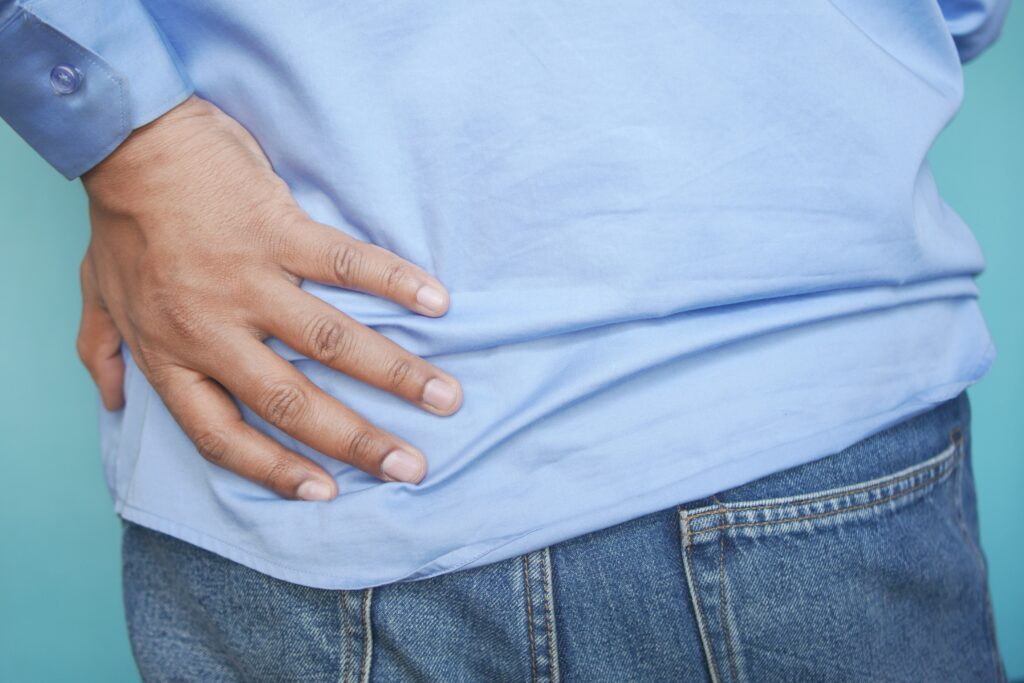All About Back And Buttock Pain
Introduction
Back and buttock pain can severely impact daily life, causing discomfort and hindering basic tasks. As a result, this article aims to provide readers with answers to common questions related to the causes and management of back and buttock pain.
Through this article, readers can learn more about the causes and symptoms of back and buttock pain, including whether or not back problems can cause pain in the buttocks, how far back pain can radiate to the buttocks, and helpful tips for relieving lower back and buttock pain. By gaining knowledge about this condition and following the advice provided, individuals can effectively manage their pain and improve their quality of life.
Causes of Back And Buttocks Pain
Back pain is a prevalent medical concern among adults in America today. Broadly speaking, back pain can be categorized into two types: acute (short-term) or chronic (long-term). Common causes of back pain include muscle spasms, herniated discs, spinal stenosis (narrowed spine), sciatica (nerve compression), strains or sprains resulting from improper lifting techniques, obesity, or poor posture. Additionally, back injuries can arise from car accidents or falls, and in some instances, may be attributed to underlying medical conditions such as arthritis or fibromyalgia.
Can Back Problems Cause Pain In The Buttocks?
Frequently, lower back problems can result in radiating pain not only in the buttocks, but also in areas such as the legs and hips. This discomfort is often attributed to a compressed nerve root, located where the lower spine meets the sacrum – a triangular bone at the base of the spine. When a nerve root is compressed, it generates signals of discomfort, commonly presenting as sharp pains when pressure is applied or during movements like walking or standing up.
What Helps Lower Back And Buttock Pain?
Effectively managing lower back and buttock pain entails a comprehensive approach that encompasses physical interventions. These interventions include targeted physical therapy exercises to bolster strength, along with thoughtful lifestyle modifications to avoid activities that can strain or worsen existing symptoms. The primary objective of physical therapy exercises is to strengthen the muscles supporting the spine and promote proper posture during prolonged periods of sitting or standing. However, it is important to seek guidance from a physician before initiating any physical therapy regimen.
Optimizing your lifestyle can involve various modifications to improve overall well-being. This may include managing stress through practices like yoga or meditation, consuming well-balanced meals rich in fruits and vegetables, prioritizing sufficient sleep, staying hydrated throughout the day, and wearing comfortable shoes that provide adequate foot support. It is also crucial to steer clear of heavy lifting, quit smoking, maintain a healthy weight through a balanced diet and regular exercise, and minimize exposure to extreme temperatures and humidity whenever possible. By combining physical interventions with lifestyle adjustments, one can effectively alleviate lower back and buttock pain and reduce the likelihood of future occurrences.
Can Back Pain Radiate To The Buttocks?
Spinal stenosis occurs when the space between the vertebrae narrows, exerting pressure on nerves that serve different areas, including the buttocks. This condition can also lead to inflammation and discomfort in other regions like the legs and hips, depending on which nerve roots are affected. If you’re experiencing any of these symptoms, it’s important to seek a proper diagnosis from a doctor before attempting any treatments. While self-treatment methods might be tempting, it’s crucial to remember that they can be risky without professional guidance, as they are based on speculation alone rather than expert advice.
What Does Buttock Pain Indicate?
Buttock pain can have various causes depending on its location and intensity. It could indicate anything from sciatic nerve impingement to hip joint problems caused by worn-out cartilage. If you experience severe and prolonged bouts of pain, it is crucial to seek immediate medical attention. A proper evaluation will accurately diagnose the exact source of discomfort before attempting any self-care methods mentioned earlier.
What Does Pain In Both Buttocks Mean?
Experiencing pain in both buttocks could indicate various underlying causes. However, it is crucial to seek professional medical advice before drawing any conclusions. This is because the reasons behind the discomfort can differ significantly from the current single-sided discomfort. A precise diagnosis is necessary to accurately identify the source of the problem and determine the appropriate course of treatment. Don’t delay seeking medical attention to address this issue promptly and effectively.
Should I Be Worried About Buttock Pain?
Determining the course of action depends on the severity of the buttock pain. If you experience a sudden and intense onset, it is paramount to promptly consult a doctor, as it could indicate a serious underlying condition necessitating immediate attention. For milder discomfort, it is generally acceptable to wait a few days; however, it is advisable to closely monitor the situation in case any unanticipated developments arise, requiring prompt resolution. Proactive measures can ultimately contribute to averting potential complications in the future.
How Can I Relieve Buttock Pain?
A multitude of self-care techniques exist to alleviate buttock pain. Practicing caution during exercise and sudden movements, along with utilizing hot/cold packs, stretching, massage therapy, and over-the-counter medications, all prove effective in reducing discomfort in this region. Moreover, employing special supports or braces during sleep can aid in maintaining alignment and promoting ongoing recovery.
Conclusion
In conclusion, it is crucial to understand the root cause of buttock pain to ensure appropriate relief going forward. If you experience severe pain on either side, seek immediate medical attention as it may indicate an underlying and potentially serious issue requiring immediate attention. However, for milder cases, there are self-care methods that can be employed, such as using hot/cold packs, engaging in stretching exercises, receiving massage therapy, and taking over-the-counter medications. Additionally, using special supports or braces during sleep can help maintain proper alignment and aid in the ongoing recovery process.

